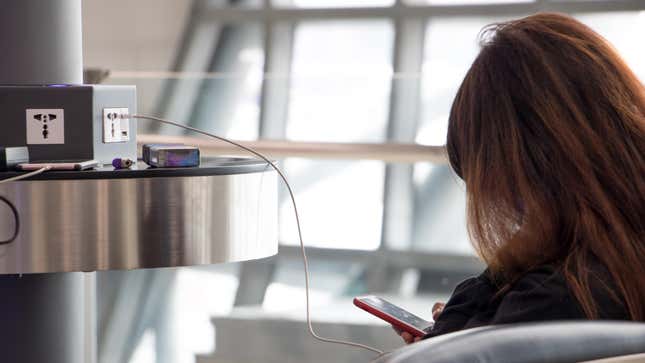
Places like airport have USB ports graciously scattered throughout, so you can plug in your phone to charge your battery. Except you really shouldn’t do that, at least according to the FBI.
The latest warning comes from the Twitter account of the FBI’s Denver field office. The bureau tweeted April 6, warning not just Denverites but all travelers not to use free charging stations in public spaces like airports, hotels, or market places:
The FBI here is referring to a type of attack called “juice jacking:” Bad actors infect public chargers with malware, sometimes leaving their own cables behind to entice passersby. When you plug your phone into an infected USB charger, that malware can be installed on your device, locking you out of your phone or copying sensitive data and sending it back to the malicious users.
The tweet features the same warning the FBI has on its article for being safe on the internet. The FCC hosts similar advice on its site, too. But the random nature of the tweet raises questions, and makes you wonder if these types of attacks are on the rise. Unfortunately, the stats on juice jacking aren’t particularly public, so it isn’t easy to tell. Plus, the FBI’s Denver field office insists the tweet was just for public knowledge rather than in response to a new threat.
Public outlets are fine, though
To be clear, there’s no danger to using public outlets. As long as you bring your own power brick and USB cable with you, connecting to a public space’s outlet is as safe as doing it in your own home. Hackers don’t have a way to install malware on your device via electricity alone.
Or you can use a charging-only cable
Another good tip is to buy a charging-only cable, if you don’t have one already. These cables are designed to only deliver power to a device, and can’t transfer data. That’ll prevent any potential malware from making the leap from an infected power source to your smartphone.
Most importantly, if you plug your device into power and see a prompt asking to either “share data” or “charge only,” make sure to choose “charge only.” Otherwise, you’re allowing your phone to communicate with the software on the other end, which opens you up to malware and other risks.
